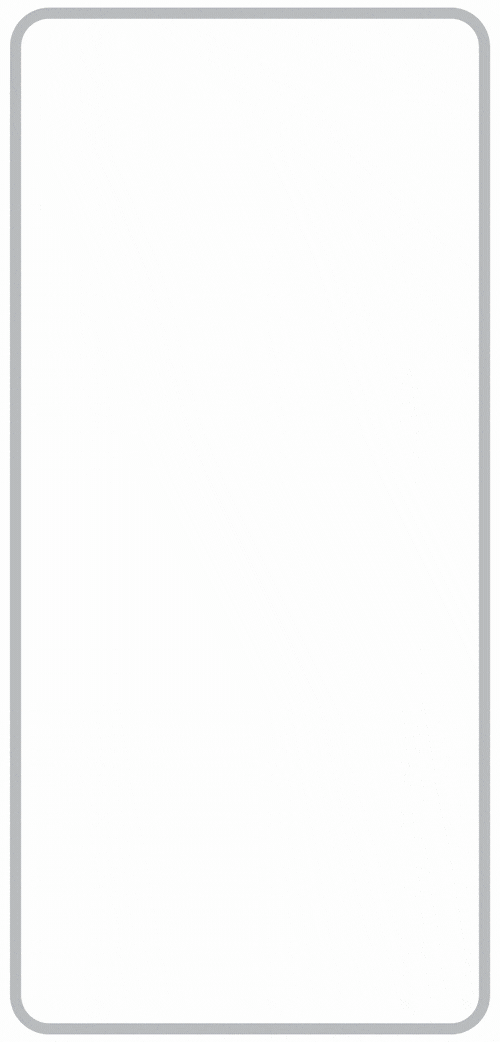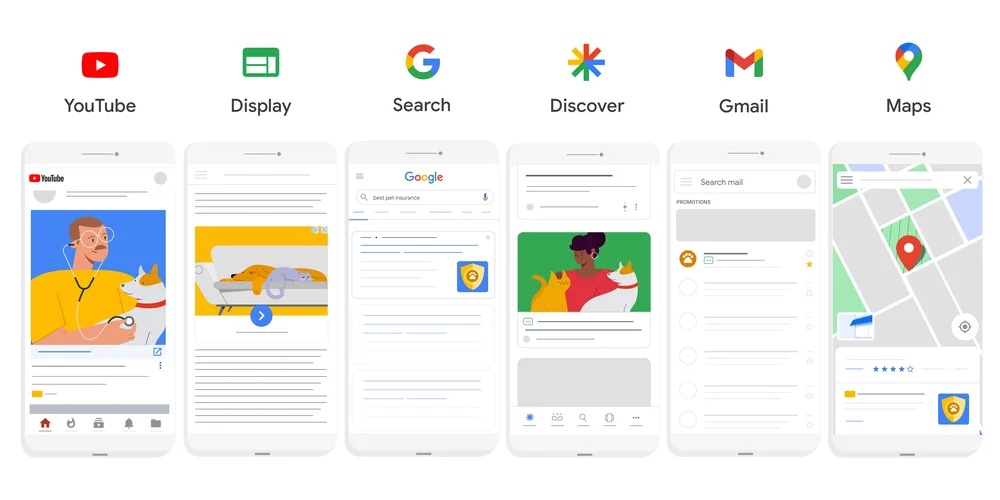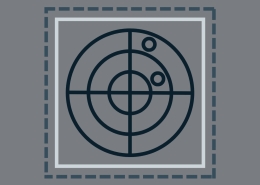The TwoSix team is here to share what’s On Our Radar for December so that you can stay ahead of the always-evolving digital marketing landscape. This month the TwoSix team discusses the experimental Google Notes feature, Pinterest Direct, and so much more! Keep reading to find out what we’re keeping On Our Radar for December 2023.

Every day, you gain some new perspective and insight into the digital marketing process. And this week, my unique perspective came from zero-click social media content.
In the past, I was a big believer in adding clicks and extending the story of social media posts to create greater value for the post and optimize your direct return. Then, I was introduced to a new perspective on zero-click content. Zero-click social media content offers numerous benefits by providing instant gratification and a streamlined user experience. Delivering content directly within your social media platform eliminates the need for users to click external links, enhances engagement, and builds loyalty and user retention. This frictionless experience saves time, as users can swiftly consume information without navigating away from their feed, leading to higher interaction rates and increased visibility for your travel and tourism brand. Moreover, zero-click content improves user satisfaction by aligning with the platform’s native experience while creating an environment that encourages prolonged engagement and brand loyalty. It is a high-funnel awareness approach that produces meaningful brand interactions.
Additionally, zero-click content – in applications like Meta and TikTok – can contribute to improved data and analytics by keeping users within the platform. The additional engagement time on those platforms also helps build future audiences by tracking the users’ interactions, behaviors, and preferences.
Although we won’t have the “old school link click data” to measure success, you will likely see an uptick in followers, likes, comments, and profile views on relevant zero-click content –all legitimate measurements of success. The engagement time on your social profiles provides additional value by helping build quality engagement audiences for your future advertising and promotional campaigns.
Click the button below to read more on strategic zero-click content!

Recently, Google announced its timeline for the long-awaited (and procrastinated) removal of cookies from the Chrome browser. This is something that has been being teased for several years. The new timeline states that in Q1 of 2024, Google will begin to disable third-party cookies from Chrome users. The full removal is stated to come by Q3 of 2024. That’s not a lot of time. This is going to be a bit of a shakeup for marketers as we’ve relied on them to make our campaigns extremely efficient and highly targeted. Get ready, it sounds like the end is coming.
What can you do in the meantime? Lean into using the cookies to build your owned data assets. If you’re putting together your marketing plan, be sure to include an “always on” lead generation component. Meta Lead Ads are one of the tools that you should be using. Use the time that we have left, to fortify your first-party data!
Establishing and growing your owned data assets with help to future-proof your organization, and allow you to develop new audiences from this data source. You can build your custom and lookalike audiences to help you not miss a beat. Learn more about creating a lead generation campaign on Meta here, or reach out to a TwoSix Digital team member to learn more about how we can assist you. Don’t delay. The clock is ticking. Now is the time to be aggressive and this deadline begins to loom heavy. It sounds like 2024 could be the last hurray for our trusted cookies.

All the Placements
If you’ve ever wanted to advertise on Google Search, Display, YouTube, Gmail, Maps, and Google Discover at the same time, then Performance Max campaigns could be an attractive option. Google is pushing Performance Max (or P-Max, for short) very hard recently. And for good reason, too: you can reach audiences in almost all places on the web with flexible, predictive, AI-driven targeting.
Targeting Options

You can target users that are searching for certain themes, visit certain websites, or might be about to complete a certain kind of purchase. Reaching people searching for vacations… on their favorite website, in Google search, and on YouTube? Yes, please.
The Drawbacks
Of course, like anything that sounds great, there are some drawbacks. In my opinion, there are two main ones. Currently, the reporting doesn’t breakdown by placement, so you can’t see where the spends are happening (for example, it could be 99% YouTube). Also, Google generates various combinations of Display ads automatically from images, videos, and text that you add. Font selection isn’t possible, so branding will not be exact. The benefits of targeting and reach most likely outweigh the drawbacks for most organizations.
Is Performance Max Right for You?
Consequently, a Performance Max campaign is perfect if you meet two sets of criteria: 1) Exact branding isn’t an issue and 2) You have a certain goal in mind. The goal could be impressions or an important action, such as clicks to partner websites or visitor guide requests. A goal will help optimize the campaign, so you can be sure that no matter the placement, interested and valuable users are being reached.
Next Steps…
If you’re interested in talking more about a Performance Max campaign, feel free to reach out! If you’re already running a Paid Search or YouTube campaign with us, the upgrade can be very simple.

Something exciting is happening at Pinterest. Back in July, Pinterest first introduced direct links and now they are expanding this feature to new types of ads including consideration and conversion campaigns. What does this mean? It means that instead of taking a user two clicks to get to your website or app it now only takes one.
Before the user would click on the pin and it would simply enlarge the pin, this is known as a pin click. Then they would click again to be taken to the website or app, this is known as an outbound click. Now, with option of direct links, we skip that first step where we would see drop off before getting to the website and we simply send the user directly to the website. This should lead to an increase in users getting to the site. According to this article, they’ve seen an increase in outbound clicks by 88% and a decrease in cost per outbound click by 39%.
This is great news for advertisers whose goal is to get people to their website. Recently, Pinterest has allowed advertisers to optimize for outbound clicks which we’ve seen has helped increase the number of outbound clicks but not necessarily improve the CPC. The expansion of this feature just might be enough to combat that issue though.

While Elon Musk has been suggesting for months now the X (the website formerly known as Twitter) may become a subscription based service, SnapChat is jumping headfirst into the pool and rolling out an ad-free version of the app for paid subscribers.
The new plan will cost users $15.99 per month and is the newest tear to the social media platforms SnapChat+ feature. This is about double what Musk has suggested users would pay on X, and it’s success or failure will be an important bell-weather for advertisers.
Sceptics believe that users have become so accustomed to free social media, even with the ads, that it will be difficult to incentivize users to switch to a subscription-based model. On the other hand, many users report being fed up with the sheer number and wide proliferation of ads across all social media platforms and may want a change.
As advertisers, paid social ads are a hugely important part of reaching audiences, especially on social media, where users can be targeted based on app usage and habits in the shift to a cookie-less world. These new changes and trends towards ad-free social media should not be taken lightly. Organizations need to continue to emphasize their organic presence, capitalize on organic trends, and build their brand audience. In the future, organic reach might be the only way to reach high-value customers.

LinkedIn’s newsletter tool is on fire, and tourism marketers need to take notice! Newsletter readership has tripled this year, exceeding 500 million subscriptions. To tap into this massive audience, LinkedIn is rolling out exciting updates that make creating a killer newsletter easier than ever.
Here’s the big news: you can now duplicate existing drafts as templates! No more starting from scratch – just pick a past newsletter you’re happy with and hit “duplicate.” This saves you time and ensures consistency in your brand voice and visual identity.
Plus, LinkedIn is introducing new analytics features to help you understand your subscribers better. You’ll see how your content is performing, who’s reading it and even get personalized tips on attracting new readers.
So, if you’re looking to:
- Reach a highly engaged audience
- Showcase your expertise as a tourism destination
- Drive traffic to your website and convert leads
…then LinkedIn newsletters are your new best friend. With the latest updates, creating and optimizing your newsletter is a walk in the park. What are you waiting for? Start building your audience and inspiring wanderlust today!


Last month, Google announced the launch of a new experiment called Notes – not to be confused with Google Keep, their note-taking app included with Google Docs.
The experiment can be found via Google’s Search Labs, where users can opt-in to try features the company is beta-testing. Notes allows users to view and share extra information alongside search results. Google describes its main functionality as “[letting] people share their knowledge right on Search, helping others find the best answers for their weirdest or most wonderfully unique questions, and discover what’s most useful for them on the web.”
Notes is only available to non-business accounts via the Google app on Android or iOS, so if you’re looking to give it a try, you’ll need to use a regular Google or Gmail account and opt-in to Notes through Search Labs. Once you opt-in, you can see a new “Notes” button that appears below search results in the Google app. If you tap the button, you’ll be able to see what is essentially a comment section for an individual search result.
Notes also lets users customize their comments with stickers, photos, and different art styles and backgrounds, similar to posts on Facebook and Instagram. Google also says that they will launch the ability to add AI-generated images to these notes.
On the one hand, I’m not so sure about this potential addition to Google results pages –comment sections can really quickly become a cesspool of useless information and antagonistic behavior. That’s something a lot of us have become accustomed to, but it’s not exactly a nice addition to search results, which are often a place for research.
However, in Google’s announcement, they say they are employing both AI-driven and human moderation to keep Notes from becoming just another comment section, and instead to keep it useful for users. I can see this being a good way for searchers to add additional context to results. In the example they show, using a search result for icing recipes, it’s pretty neat to get tips from other people who’ve tried out these recipes for themselves. This could certainly be a great new way to leverage user-generated content to enhance CVB search results – locals can share their favorite hole-in-the-wall spots, past travelers can give insights on their experience visiting, people can pine over the fun they had in your town back in the day… All of the best aspects of social media comments can potentially be transferred to a wider audience through Notes.
We’ll see how this pans out, and hopefully, this can become a widely used and beneficial feature of Google results. I’ll be giving Notes a try, how about you?
With the ever-changing digital marketing world, we are here to keep you informed of new digital trends and what we are keeping on our radar for December 2023. Have any questions? Contact us! We’re here to help.
Make sure to subscribe to our newsletter to stay in the loop on all things TwoSix Digital.








